|
30th April 2022
It's a Saturday and we're with the Woking Gaming Club for Wogglecon 3, a day of gaming at Bisley Scout Hall. I played the following games: Century: Eastern Wonders Sushi Go! Machi Koro 2 - First Play! Tiny Epic Galaxies Quacks of Quedlinburg
0 Comments
26th April 2022 Tuesday is here and we're at The Sovereigns with the Woking Gaming Club. Does Hellapagos mean hell in the Galapagos islands, I didn't see any giant tortoises in the game? Anyway; Hellapagos is a (Somewhat!) cooperative game about surviving the ordeals of being shipwrecked on what would in other circumstances be a tropical paradise, building rafts and escaping. What's in a game?
Only the cards are what I would consider average in build production, which is to say, they're fine. The tokens feel suitable chunky, as do the balls and bag (Sic) which are a nice touch. The standout component is the completely superfluous cardholder which displays like the wrecked hull of a half sunken ship. Hellagapos makes use of excellent bright and colourful artwork throughout, especially on the cards. With thick black lines and lots of colour it has an almost ligne claire quality to it. Furthermore, there's also a lot of humorous subtext to the art. Like the pendulum that makes another player take a one action of their chosen by the card-player (Hypnotises them!) and so on. There's minimal iconography in the game and what there is, such as water or fish icons are easy to comprehend. Actions on the survivor cards are all detailed by text instead. How's it play? Setup
On to play Hellapagos uses a normal turn structure with the active player taking their turn before play progresses to the player to their left. The game has 4 basic actions a player can perform but because it's a cooperative game, there can be a lot of discussion about moves and strategies among players and later, negotiation taking place. A round represents 'a day' and plays as follows
Endgame There 3 ways Hellapagos can end.
Overall
There's a lot to unpack with Hellapagos and I'll start with the mechanics. The write-up is a little long and belies the fact that in play, the game is pretty straight foward to understand and play. More importantly; it's clear that the game's mathematics have been balanced so that it's very hard to get all players off the island. Which makes sense from a game-perspective, it forces players to consider different late-game strategies. If say, a group of 6 players had 9 days to get off the island, they'd need the following. Water: 6 per day +6 to leave -12, which is their starting water. So 48 water. Food: 6 per day +6 to leave - 10, which is their starting food, so 50 food. Rafts: At 6 wood per raft, they'll need 36 wood. In other words 5.4 water per day, 5.5 food per day, 4 wood per day. If the player split their labour evenly per task, that would mean: 2 players getting 2.7 water per day each. 2 players getting 2.75 food per day each. 2 players getting 2 wood per day each. Getting both water and food at that rate is pretty hard. Each player would essentially have to get 3 or their chosen resource per day, every day. Since 3 is the top end result players could hope for, it's unlikely this will occur. Getting 2 wood per day per player seems easy but each player has a 16% chance of being poisoned, this might not seem high but when it does occur, it means that they only get 1 wood and lose their next action. Catching up in a following round mean getting 5 wood, this is a lot more tricky. Of course players may want to search the wreckage and rightfully so, there are some very useful cards to be found in there, including for example; cards that skip the consume food action among others. On the other hand, it's equally as likely that something which helps a player personally might be found... Players may want to divide their labour differently as well; when lots of rain appears, it might be good to get more people gathering water and 'get 'ahead' on the water track. A game like Hellapagos thrives on player social interaction, if people don't engage with it, it won't be a particularly interesting or memorable game. Ultimately though, players will sooner or later come to a conclusion; there won't be enough resources for all the players to get off the island. This changes the game in 2 ways. Firstly, players will begin looking at who to vote off as food and water become scarcer. Players will try to emphasise their own usefulness and see who can be a good target for elimination during voting. This is where having a valuable item can keep a player alive. Some ongoing cards are very handy and eliminating the player who controls it, also eliminates the item. Not a coincidence in the rules I think. Additionally, players may also look to horde rations on wreckage cards, waiting until voting has occurred, allowing others to be eliminated and only using it when they have been voted out. However, other players can look at this very negatively and it can draw their ire. players are free to form alliances or betray one another, gang up on other players, openly or otherwise and so on. Needless to say negotiation and voting can become very tense. Secondly, people will start to realise that when player counts are sufficiently low, that eliminating players after collecting resources can leave the survivors with enough resources to escape the island. The thing is though; it's likely that they'll be enough food and water to prevent any voting from going ahead. Players will have to resort to 'other methods' to removing opponents. This is where the game gets brutal and the pistols start getting used. Hellapagos mixes cooperative game play with a large dose of 'take that' actions. In the early-game it's all pleasant enough but once it progresses on, everything can change. I, like many other people I imagine, am not a fan of games that have player elimination, luckily for Hellapagos, players won't generally spend too long just watching. It doesn't frequently occur early in the game and once the eliminations start, they don't stop until the game does! I will also add; if game with lots of direct 'in-your-face' conflict and player elimination aren't your thing, it would prudent to give Hellapagos a miss. but if this sort of thing is your jam, then with it's 12-player count! Hellapagos is a good game to try. 20th April 2022 It's a Wednesday and we're round Simon's for an evening of gaming. Unlock! The Escape Game are a series of games drawing inspiration from escape room games and as you'll have gathered from the name, Star Wars: Unlock is a Star Wars themed Unlock! game. Time to escape Star Wars! Note: Unlock! games come with 3 scenarios and in the case of Star Wars: Unlock!, we played the Secret Mission on Jedha scenario, one of the harder scenarios and which involved being nasty Imperial spies running round a desert. What's in a game?
Star Wars: Unlock! is a card game with a map, quality wise it's exactly what you would expect of cards and a small paper map, which is to say; perfectly acceptable. Art-wise, like all Star Wars licensed games I've seen, the quality is consistently high throughout. I don't know whether the art was created specifically for this game or was sourced from what must be a huge archive of art that has been produced and accumulated over the decades but regardless, it's all looks good and has a appropriately Star Wars feel to it A few icons are used throughout the game, they're pretty clear and self-evident, I can't imagine they would prove an obstacle to players. How's it play? Setup
On to play Star Wars: Unlock! is all about discovery and deciphering clues which will eventually lead to the scenario's conclusion. Functionally, the game works a little like a gamebook where players would get to choose which numbered paragraph to read, except in this game it's done with numbered cards instead of paragraphs. There's also a bit more to Star Wars: Unlock! than most gamebooks though, especially in relation to how the app is utilised. It's tricky to describe how the game plays, especially without some sort of spoiler but basically, the players collectively try to solve the puzzles presented to them. What follows are descriptions for actions players can take.
Endgame There's no way to lose Star Wars: Unlock! per se, when the countdown reaches 0 it instead simply goes into 'negative time'. After reaching a scenario's conclusion, the app will then rate the player's collective performance from 1-5. Computer says you get only 1 Star! Overall
Star Wars: Unlock! pulls some clever tricks with how it uses cards and how it combines them with the app to provide some engaging obstacles to overcome. We're not geniuses by any stretch but nor are thick, so for the most part the scenario was well balanced, we were stumped for a while on a couple of occasions and referred to the app's hint system for a card once. Otherwise the game was more or less straightforward. The play time is fairly brisk in Star Wars: Unlock! with players facing with some unusual problems to solve while under the pressure of a ticking clock. The box states that 1-6 people can play but I'm sceptical about this. I just don't think that there's enough to do to occupy 4 people, let alone 6! By the the game's very nature, there tends to be a lot interconnectivity between cards and the clues they represent. This means that it's not particularly conducive for solving challenges to split cards between players and as a result, the cards will tend to be be hogged by some players while others are left twiddling their thumbs. Playing with 3 people might be OK, 2 players and you're golden. I'm also not a fan of app-driven games and licensed ones even less so: Eventually that game license will eventually and what happens to the apps distribution then? Having said that, there's little replay value to the game, once all 3 scenarios are completed successfully, players will have no reason to return to the game. Putting those (Non game.) criticisms aside, if you like puzzles and problem-solving, then this may well appeal to you and if you also like Star Wars, then doubly so. Especially since it's also a fairly accessible crossover or gateway game the could attract fans who are non-gamers. 19th April 2022 It's a Tuesday and we're at The Sovereigns with the Woking Gaming Club. Mesopotamia; source of much history, a birthplace of the world's early civilisations. Also the source of many board games, one of them being Babylonia. Take on the role of a merchant dynasty and attempt to create the most lucrative trade routes. What's in a game?
Babylonia's components are all good. the cards are actually as chunky as the tokens. The remaining components. the tokens and ziggurats are all constructed of wood and feel high quality. The stands are a nice touch. The artwork used on the board is good and portrays what I imagine to be a suitably middle-eastern landscape for Mesopotamia. It is perhaps a little too busy and distracts the eye, however, the hexes help to make the layout clear. The cards all use the same illustration which is a little bland. For the most part, iconography is easily understood. Only some of the ziggurat cards are not immediately clear and will require looking up in the rule book but that only applies when and if the card comes into play. Nothing that would be a problem or approaching a dealbreaker. How's it play? Setup
On to play Babylonia uses a standard turn structure with the active player taking their turn before play moves to the left. In their turn, there are 3 phases active player must complete.
Endgame Play continues until 1 of the following 2 criteria are met: A player has no tokens on their stand. Or There are only 1 or 0 city tiles left on the board. In either case, the game ends immediately! Points are tallied, highest score wins. Overall
If you were to look at a game of Babylonia in progress, you'd be forgiven for thinking that with all these tokens in play at the same time that it's a complicated game but it's not. From the rules write up above there's not too much to learn but like all good games, there's a lot to think about. Right from the start Babylonia provides players with meaningful decisions to make and several paths to scoring VPs which can be prioritised. Often these will vary in value contextually and in relation to other decisions. There will be short term and long term goals. Take ziggurats for example, a player may put tokens next a number of different ziggurats to score points as efficiently as possible but may also choose to concentrate on a single one in order to secure a card. However, taking too long to gain majority on a Ziggurat may lose you some actions. Cards themselves will change in importance, those with continuous ability will be most exploitable in the early game and those with once-only bonuses will be important in the late game - provided of course, that someone else hasn't beaten you to the punch. Farms and cities have an interesting relationship, getting cities quicker than other players can earn a lot of VPs when some farms are scored or more city tiles are acquired. But city tiles need to be surrounded to score - unlike farms which can score immediately. Sometimes It may also take more actions to surround a city; if it looks like a player is going to get majority in a city (Or ziggurat actually.) other players wont be incentivised to complete it early for another player's benefit. Finally, there's the network of tokens that players will create, their trade routes. Finding ways to connect nobles to matching city tiles on other parts of the board can be a good source of points. Especially if a noble can be connect to multiple cities, a city can only be scored once so getting another use out of already played token is useful. It's here small token plays can have big outcomes. Sometimes players will want to put specific nobles into player or sometimes use farmers for rapid expansion. All of this is dependant on what tokens get drawn though. It's likely that something will not go to plan thanks to other players. Adapting to circumstances can also be important. Paying attention to what other players are doing is also vital since - apart from what's on a player's stand - everything is open. It means that it's likely that getting majority will eventually become a race as players' objectives clash and anticipating those objectives can make a difference. With straightforward rules and a brisk playing time, Babylonia is fairly accessible but also provides players with meaningful decisions. I enjoyed it and would recommend it. 15th April 2022 It's a Friday and we're logged into Board Game Arena for some afternoon gaming. Take a road trip across America, visit the landmarks, go wildlife spotting, play some sports, end where you started? Send a postcard (Or write a letter from America.), walk 500 miles, maybe walk 500 more... OK, enough of the tenuous references. Boomerang: USA combines set collecting and roll and write mechanics into a point salad of a scoring game. Caveat: We've only ever played Boomerang: USA digitally. What's in a game?
The only artwork in the game appears on the 28 cards and is obviously referencing the locations the cards represent. It's pretty artwork too, with blue skies and bright colours. Using letters/symbols for cities is a smart move and easily understood. Boomerang: USA makes use of 4 types of sets to collect and each set will feature its own range of icons, it means that the game has a fairly large array of icons. Luckily, it's clear which icons belong to which set and players don't need to reference a rulebook to know what they mean since the game is about matching icons in their respective sets. How's it play? Boomerang: USA is played over 4 rounds and uses a drafting mechanic where players pick a card from their hand and then passes the remaining cards to their left, then all chosen cards are revealed (Or not for the first card.) simultaneously. This continues until all cards have been selected and players have acquired 7 cards.
Endgame Once the 4th round is completed and scored, players then total their final score from across all 4 rounds. Points are tallied, highest score wins. Overall
On a basic level, Boomerang: USA is a straightforward drafting game. It's point salad of scoring mechanics makes the game complex, most of the blog above talks about the 7 ways to score VPs. Some of the scoring methods have pretty standard elements, collecting matching pairs or 1 kind of set are common, however, restrictions on how these are scored, particularly for Americana activities add an unusual twist. The throw and catch mechanic is the standout here, presenting players with a clear risk and reward choice right at the start of a round especially when this is when they'll have all 7 cards to choose from. Play a 1 as the throw card and it's guaranteed to score but is only worth 1 VP. Playing a 7 as the throw card earns 7 VPS but requires a 7 as the catch card; since player have no control over what their last card will be it's a risky proposition. Typical for a game of this type, it's more or less impossible to score well in all categories at the same and the dilemma of what a player should prioritise is what drives the gameplay. Should a player concentrate on getting locations and regions (Which are another type of set really.) over other sets? Is it a good idea to have a steadily increasing Americana score over round, or go high then score 0 to score high again? When is a good time to try and get a good score in a particular activity? A lot of this will be contextual or unpredictable, it's the nature of this kind of drafting game. Players will probably start a round with no clear direction and will need to adapt to a strategy and recognise what to prioritise as it emerges from whatever cards they pick. There's also a higher level of play where players can watch their opponents to try and gauge what they're concentrating on and deny it to them: If it looks like an opponent is trying to complete coast-to-coast, a player might chose and play a card with the location needed themselves in order to deny that other player. Although I'm not sure that denial tactics are that effective though, it's entirely possible blocking a opponent will involve blocking yourself as well. I felt like the travelling, roll and write element was a bit out of place here, adding extra layers of what seem like unnecessary complexity the game. So while the game has depth thanks to all these scoring opportunities, it actually felt like it was perhaps a little detrimental to the experience, increasing thinking time and inducing some analysis-paralysis as a consequence. Otherwise I can't really find fault with Boomerang: USA, it's not a bad game by any stretch, it just somehow didn't appeal and seemed a little unengaging. Maybe the theme of being a tourist did quite gel with me? I feel that there are other mechanically similar games that are a little more accessible and quicker to play. Obviously, YMMV, a fan of card drafting games who plays them often might find the roll and write part of Boomerang: USA a fresh take in the category. 10th April 2022 Sunday evening is here and we're logged into Board Game Arena for a night of gaming. 'Viva Las Vegan!' Or 'Millions of cabbages, cabbages for me.' 'Millions of cabbages, cabbages for free.' Err... wait...? No... that's enough of that! Las Vegan is a umm.. vegetable-themed trick taking card game? Caveat: We've only ever played Las Vegan digitally and not sure if a English language version is even available in hard copy? What's in a game?
There's fairly minimal art throughout Las Vegan. The cards feature illustrations of vegetables on a slot machine reel and the cabbage machine cards show either vegetables or numbers across 3 reels. Nothing bad but also nothing to write home about. There's no iconography to speak off, just plain and simple numbers as well as the icons for the 4 types of card. How's it play? Setup
On to play Las Vegan is played over 1-4 rounds, each round follows the typical turn structure for a trick taking game, with the first or active player playing a card and the player to the left the 'following' that play.
Endgame Las Vegan can end in 1 of 2 ways. If during scoring at the end of any round, any player's cabbage tokens (VPs.) reaches 0 or lower, it ends the game. The game will also end at the end of the 4th round regardless. Once the game has ended, players tot up their remaining cabbage tokens. Points are tallied, highest score wins. Overall
The first thing to talk about is the scoring and particularly the casino chips. The values on the chips go from -3 to +1 and obviously skew heavily towards the negative, it's even worse than that though. There are 4 double-sided chips and +1s only appear on 2 of the 8 sides (Although in some regard this is quite logical as most numbers only appear twice across the chips.), thus it's skewed both in value and probability. The golden casino chip is negative on both sides. All of this means thhat this is a game about how little you lose, minimising your losses and not really how much you accumulate. Las Vegan appears to be themed ont slot machines and one-arm bandits and maybe this is part of that theme; 'The house always wins?' Even so, it all seems negative and doesn't feel like fun. Despite my reservations about the scoring, the casino chip mechanic itself is pretty interesting. When a player gets the opportunity to deploy a chip, they'll want to try and remember what cards they and the other players have taken. E.g., if the '3' cabbage machine card is in play and a player knows an opponent has taken several 3's, they may want to put a big negative on that card to hit them. Conversely, a player may try and use a +1 if they've collected 3s this round. This is also affected by when 7s appear. The earlier that 7s appear, the more of a gamble it is using the casino chips, if they appear later, it's a lot easier to predict scoring. It's also that chips might appear right at the start or end of a round, or several may appear in single trick. Players will need to calculate and adapt when using the casino chip, remembering plays opponents make made will be helpful too. There's not too much to say about the mechanics for the actual game, which are very straightforward and about as basic as a trick taking game can get - and that's not a bad thing, it makes the game accessible and easy to learn, as well as playing fairly quickly . Las Vegan could be a good filler or finisher for the day. Having said that, the scoring mechanics feel a little clunky, counterintuitive and unnecessarily fiddly. The game's depth comes from strategies that will emerge once casino chips are starting to get played on cabbage machine cards and then players will look to how they can manipulate or win or lose tricks to optimise their scores. For me; I found the game's simplicity a little unengaging, a little too run-of-the-mill while the depth the scoring brought to the table (sic) did not add enough to make me want to play more. The negative scoring also left me feeling frustrating. Not a game for me. 5th April 2022 It's a Tuesday and we're at The Sovereigns with the Woking Gaming Club for some gaming goodness. 'I enjoyed Muffin the Mule.' 'You can get locked up for that.' No wait, this isn't about Muffin the Mule, its about Muffin Time. 'I enjoyed Muffin Time.' Not sure that sounds better? (Apologies for the old Goodies joke.) Muffin Time is a light, off-beat party game that's easy to pick up and player with supposedly 20 minute play time. What's in a game?
The game utilises comedic and cartoony black-line illustrations with a dash of bright colour for the borders and card titles that suitability fits the game's style. There's no iconography in Muffin Time to speak of and the game's filled with unusual or unique cards and rules exceptions. Consequently, all cards contain specific text on how they function. How's it play? Setup
On to play The objective in Muffin Time is for a player to acquire exactly 10 cards at the start of their turn. The game uses a typical turn order, at least it does at the start with the active player acting and play progressing to the left. There are 2 phases to each turn.
Endgame Play continues until any player has acquired exactly 10 cards in hand, upon which they must immediately shout 'It's Muffin Time!' If, when that player becomes the active player they still have exactly 10 cards, then they win the game! Overall
Despite being a rules-light game, there's a couple of interesting elements at play in Muffin Time. Firstly and most obviously, are the trap cards: They require players to pay attention to the behaviour of their opponents in order to trigger traps. However, there's also a higher level of play at work, where participants can try to induce other players into falling into their traps, such as my aforementioned attempts to get the other players to yawn. It add an unusual and interesting facet of playing the player and not the game to the mix. Secondly, is the action economy: Play a card or draw a card, it's a simple rule but it has an interesting effect. Essentially, playing a card gains the player whatever benefit that card gives them but it also loses them that card from their hand, thus making their goal 1 step further away. Does the benefit of playing it outweigh the cost? The answer will always be contextual, especially since some cards do stuff that's just funny and players will end up playing them just for the sake of playing them. The same quandary is actually also true of counter cards. The core gameplay is highly situational, it requires players to adapt to unpredictable turns of play and exploit events as they occur with the cards they have in hand. This is not a game of planning ahead too much. It's also bit of a silly game with some silly card actions such as 'Last player to stand up discards 2 cards.' There are also cards that may change the win condition, turn order etc. If this sort of thing is an anathema to you, Muffin Time is probably one to skip. Otherwise there's not too much to add about Muffin Time really. it's an easy to learn, pick and play party card game that can be a lot of fun if you don't take it too seriously and allegedly has a 20 minute play time and can be a good filler or finishing game. I say allegedly 20 minutes because circumstances and certain card plays can dictate otherwise - games can go on considerable longer, is that good or bad? Muffin Time can be very enjoyable but it can also outstay its welcome. So, YMMV. Don't let that put you off though. I feel that Muffin Time is good party game when played with the right mindset and is worth trying. Still working through my back log! The gaming numbers for March 2022 are slightly lower than February. Total games: 40 Different games: 28 First plays: 6 Tuesday 1st at The Sovereigns with the Woking Gaming Club.
Tiny Epic Galaxies - 5 Thursday 3rd round Simon's. Lost Ruins of Arnak - 2 Friday 4th at Farnborough. Team3 - First Play! Codenames - 4 Sunday 6th on Board Game Arena. Loco Momo - 3 Codex Naturalis - 19 King of Tokyo - 7 Can't Stop - 10 Love Letter - 56 Tuesday 8th at The Sovereigns with the Woking Gaming Club. Wayfinders - 3 Wednesday 9th round Simon's. Paleo - 3 Thursday 10th on Board Game Arena. Loco Momo - 4 Via Magical - 9 Railroad Ink - 20 Lucky Numbers - 18 Can't Stop - 11 Sunday 13th on Board Game Arena. Stella - Dixit Universe - First Play! Forbidden Island - 12 Happy City - 9 Railroad Ink - 21 Lucky Numbers - 12 Tuesday 15th at The Sovereigns with the Woking Gaming Club. Four Gardens - First Play! Regicide - First Play! Wednesday 16th on Board Game Arena. Stella - Dixit Universe - 2 Cloud City - 10 Can't Stop - 12 Lucky Numbers - 13 Sunday 20th on Board Game Arena. Hanabi - First Play! Parks - 7 Can't Stop - 13 Lucky Numbers - 14 Tuesday 22nd at The Sovereigns with the Woking Gaming Club. Apollo - 2 Deep Sea Adventure - 4 Wednesday 23rd round Simon's. Western Legends - First Play! Sunday 27th on Board Game Arena. Carcassonne - 6 Loco Momo - 5 Stella - Dixit Universe - 3 Lucky Numbers - 15 Tuesday 29th at The Sovereigns with the Woking Gaming Club. Tiny Epic Defenders - 2 Jump Drive - 6 23rd March 2022 It's a Wednesday night and we're round Simon's for an evening of gaming. 'You see, in this world, there’s two kinds of people, my friend – those who write dodgy blogs about board games, and those who read dodgy blogs about board games. You read dodgy blogs about board games!' Western Legends is a western themed open-world sandbox board game where players are free to pursue several differing roads to success. What's in a game?
The quality of the components in Western Legends is high, the cards, boards and tokens are all well made, the dice are plastic but nicely rounded and finished in a cool looking black and gold colour scheme. I like the gold nuggets and always appreciate the usage of wooden components. The plastic miniatures are unpainted but have a reasonable amount of detail. While essentially unnecessary, the general store tray is eye-catching and looks great on the table. The use of art is solid throughout the game and fits the western theme very well, illustrations feature on all the cards and are high quality, the character card portraits are the standout here. The board also looks good, with its map-like artwork. All-in-all well presented. Quite a few icons are used in Western Legends, most of it is clear and easily comprehended. Players will probably end up referring to the rulebook on several occasions, however, it's likely that this will be as much to get a handle on rules as to decipher the game's iconography. How's it play? Setup
On to play Before discussing how a turn plays out, some rules needed to be explained.
Actions Beginning with the first player and progressing to the left, each player takes their turn. The bulk of active player's turn will consist of 3 actions, which can be taken in any order or multiple times. Most of the actions a player can take will be contextual to their location or proximity to other players or NPCs. The turn order is a follows:
There a large number of contextual actions available in Western Legends obviously depending on the situation.
If the active player is on a space with an icon, they may trigger that action. There several types of location and some have multiple options.
When the active player has finished their 3 actions, the following events occur.
Endgame Play continues until someone reaches 15/20/25 Legendary Points (As decided by players for a short/average/long game.) which triggers the game end and all players get one final turn. After this players tot up their final VP total (Legendary Points.) which comes from various sources.
Points are tallied, highest score wins. Overall
It might seem from this fairly lengthy write up that Western Legends is complex but this isn't the case. There are lots of options and choices in this open world game that players can take but the implementation of this through the rules is actually quite straightforward. Western Legends has enough flexibility to give players interesting choices to follow and provide a varied experience but doesn't bog them down with too many rules. This wide variety of choices provides players with several differing approaches to accumulating VPs and one of the interesting aspects is how these elements interact with each other and nudge players into also doing so. For example: Prospecting can be a good way to go, mining and selling gold nuggets earns both VPs and cash (Which can be spent for even more VPs!), provided that the player can get to the bank. Outlaws will want to steal that gold for themselves (Or engage in other dastardly behaviour.), which in turn increases their wanted rating. For bandits, this is a good thing, because their wanted rating has the ongoing effect of constantly increasing their VPs. Consequently, it means that players on the marshal track will be motivated to hunt down and arrest outlaws to prevent this occurring. Players will want to watch what others are doing and if necessary, adjust strategies to respond to other player actions. Having said that, the open nature of the game means that players could also simply avoid each other and it becomes a race to get to the Legendary Point threshold. These differing playstyles means it's hard to describe what a typical game would be like to play because there really isn't a typical game. Western Legends is also a bit of a RPG-adjacent game but handles those elements fairly simply. There are no experience points or levelling-up here, but purchasing item cards serves the purpose of increasing characters' abilities and thus money is a bit of a stand-in for experience points. Additionally; from story cards and character objectives to tales that arise from emergent game play, the game is full of appropriate narrative beats. As a result, the game's old-west theme feels strongly implemented. If I had a criticism, it's perhaps that the playtime feels a little long, however, I never felt like there was too long spent in downtime between turns. As far as sandbox games go, I definitely think that Western Legends is one of the better examples. The implementation of the western theme is fun and fits well. If sandbox game are what interests you and you like the old-west theme and presentation, it's worth a try. 20th March 2022 It's a Sunday and we're logged into Board Game Arena for an evening of fun. Hanabi is a cooperative game about lighting a series of larger and larger firework displays. The catch is that everyone must rely on other players to give them clues to do so. Get it wrong though and the show could end early. Who thought fireworks could be so stressful, well... other than pets! What's in a game?
All the artwork on the cards are understandably themed after fireworks in their respective colours. For the most part it looks clear but I've found that in dimmer light, the colours can look a little weak. Hanabi makes minimal use of iconography, the cards are cleared numbered while icons are also used to designate different colours. 2 symbols are used on tokens. How's it play? Setup
On to play The objective in Hanabi is to create a stack of face-up cards for each colour by playing them in numeric order, starting with the 1 and finishing with the 5. All of this must be done without any player looking at their own cards. Players should hold their cards up with the backs facing them so that all others can see what cards they have. Players then provide clues to each other and use these clues to deduct which cards to play. Hanabi uses a standard turn structure with the active player taking a turn before play progresses to the left. The active player must perform one of the following actions.
Endgame Play continues until 1 of the following 3 criteria are met. Win: If the 5th card of all 5 stacks are correctly played, the players immediately win the game. They have achieved a perfect score of 25. Lose: If the 3rd and final storm token is flipped over, the players immediately lose, scoring a big fat 0! Deck depletion: If play progresses until the last card is drawn from the deck, all players get one more turn. After this, the game is scored and the players collectively gain a score equal to the value of the top card on each stack, thus the maximum score of a incomplete game is 24. Overall
One of the things I like about Hanabi is that it's a small, fairly easy to learn cooperative game that provides a solid challenge, it has a reasonably quick playing time and would work well as a filler game. What's interesting in my opinion are the mechanics for clues and also clue tokens as they are inextricably linked. The game does a good job of balancing the usefulness of clues with their scarcity. When giving clues, players will want and need to give clues as efficiently as possible, it takes 2 clues to clearly define what a card (Both colour & number.) is and this uses a quarter of the available clues which is a lot! Frequently that means a clue might need to have a implicit meaning attached. E.g.; the clue, "You have one green," might implicitly mean 'Play that green card!' Players receiving clues will need to interpret and deduct meaning from the information they have now been given, combining it with the information they see in other players' hands before deciding what to do. Sometimes they won't have all the information they want, sometimes they'll need to gamble on a decision. Flipping clue tokens back to their unused side can be vital to doing well, usually this will involve discarding cards and it also allows players to draw cards and put new options into play. Blindly discarding cards can be tricky though, if a 5 is discarded, there goes the chance to get a perfect score. - Not that getting a perfect score is easy, it's not! Consequently, it's sometimes a good idea to give players clues about what to get rid off. not keep. It should also be noted that like many cooperative games, luck can play a big role in Hanabi. If those lower value cards don't until later in the game, players will end up discarding higher value cards to get to them. Hanabi does have some minor drawbacks though. Having to constantly hold up cards so others can see them feels a like a little bit of a pain. The same is true of drawing new cards and remembering not to look at them. When a player is given clues about their cards, it can be a chore to remember not only what the clues are but also the location of those cards in their hand. Otherwise that can lead to some pretty devastating plays! Interestingly, the digital version of Hanabi remembers the clues for players. I also found Hanabi to be slightly frustrating, although this may be due to the behaviour of other players. It's definitely stressful watching another player not get the hint when they've given a clue. These are minor quibbles and Hanabi is a unusual and challenging cooperative game that forces players to think hard and logically, provides meaningful decisions and some solid fun: Some big gameplay delivered in a small package. Hanabi is definitely worth trying. |
AuthorI play, I paint. Archives
March 2024
Categories
All
|

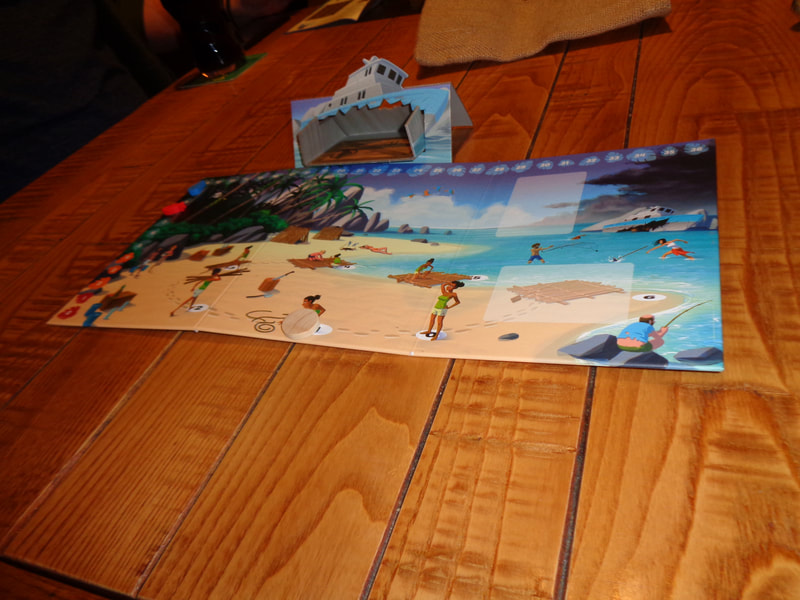
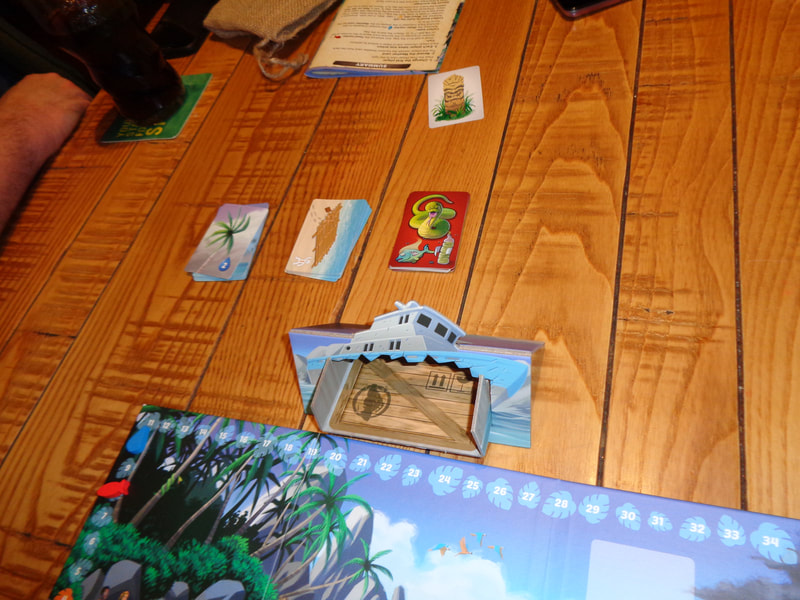
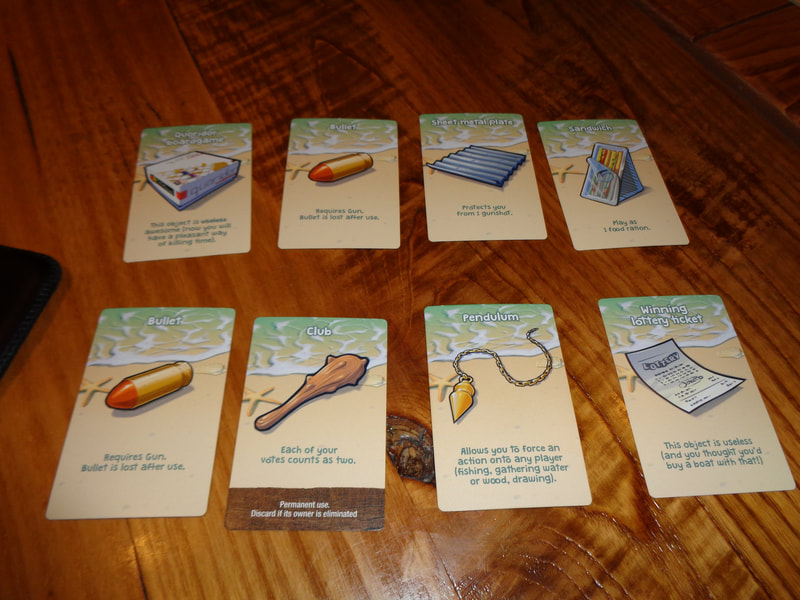
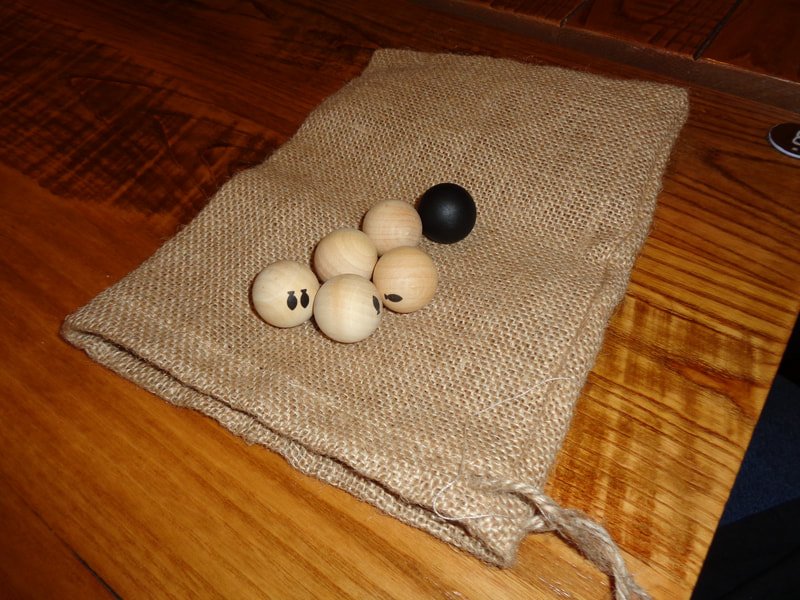
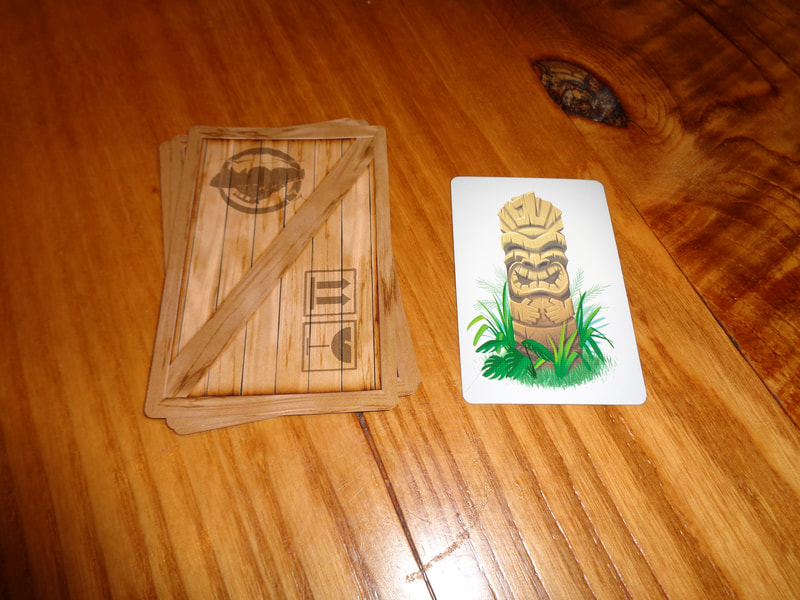
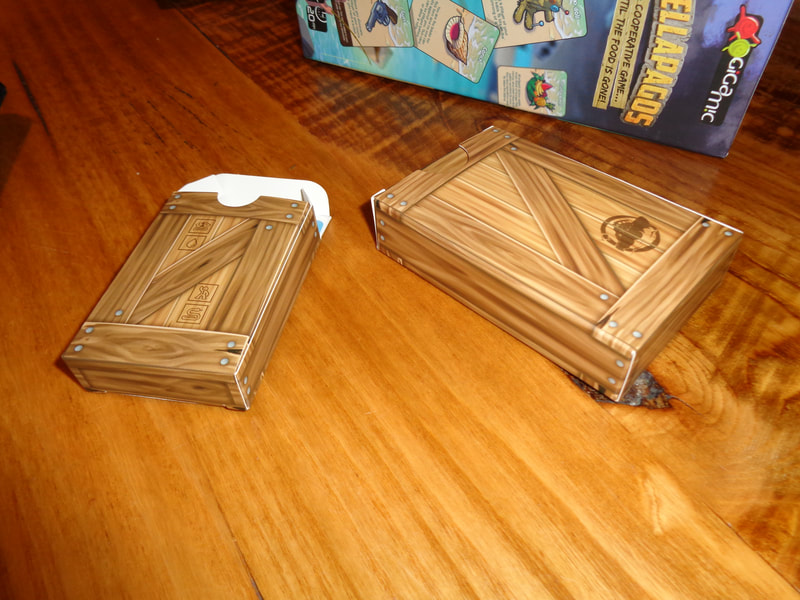
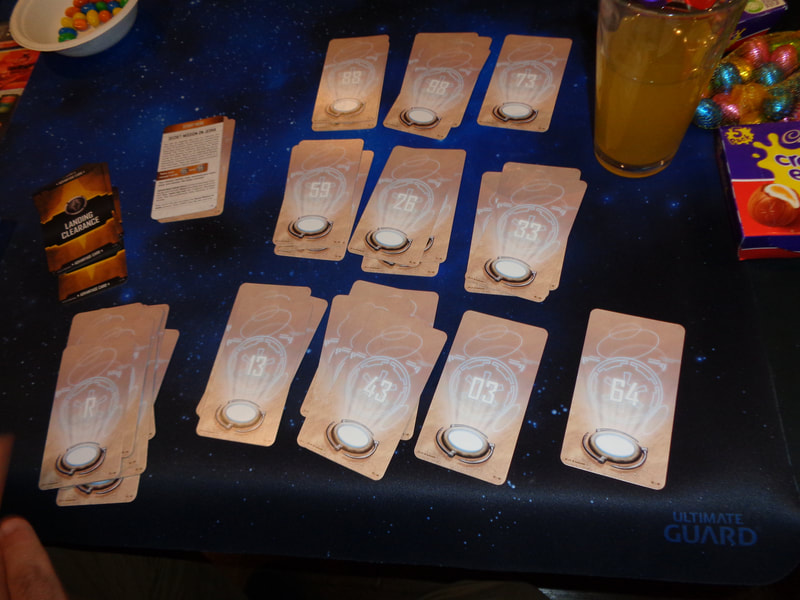
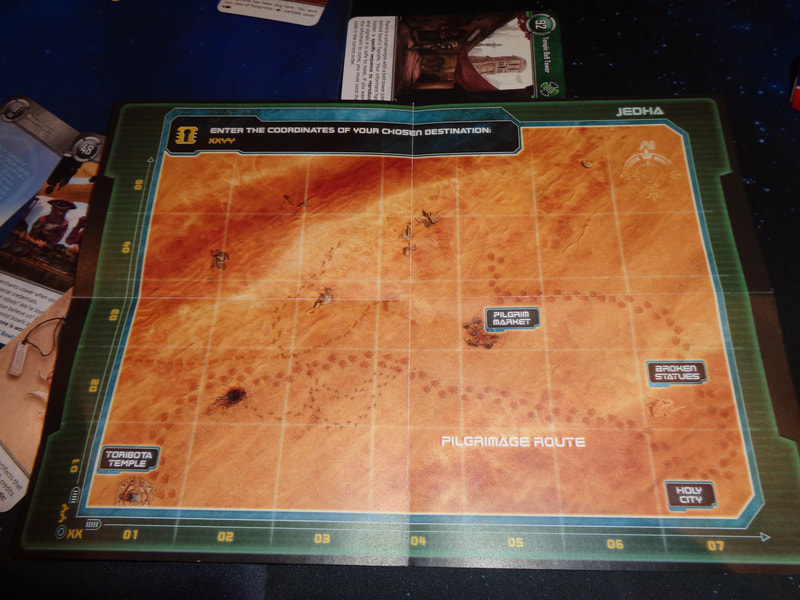
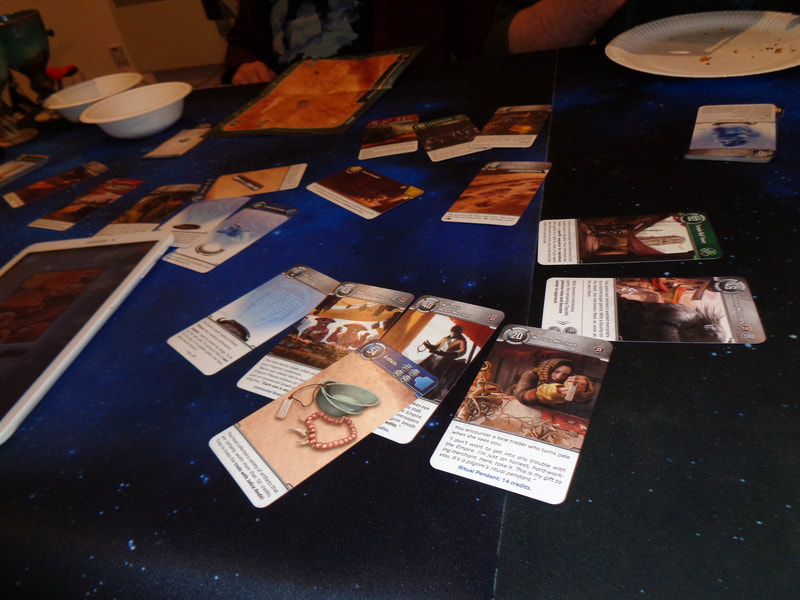
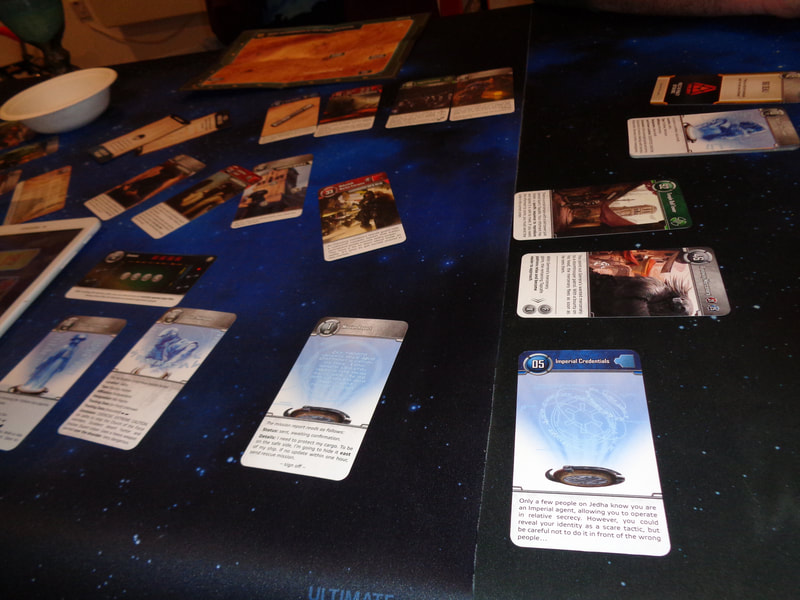
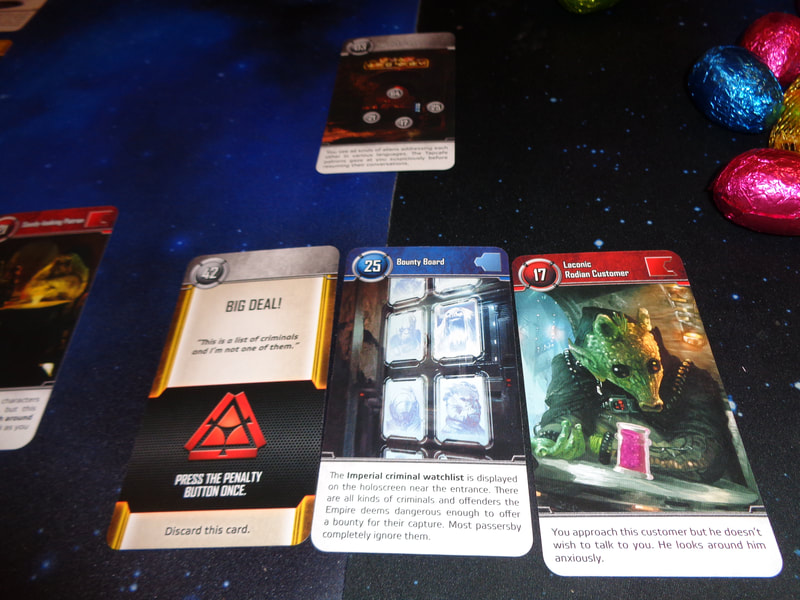
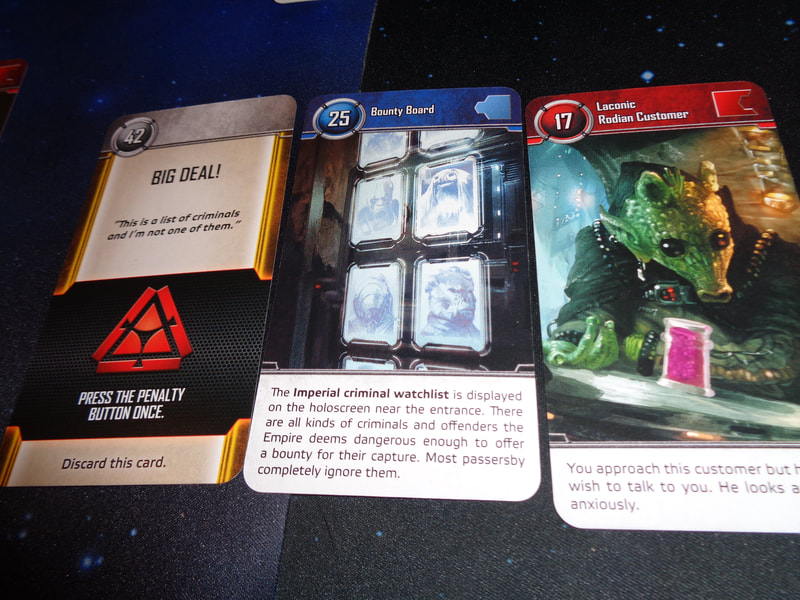
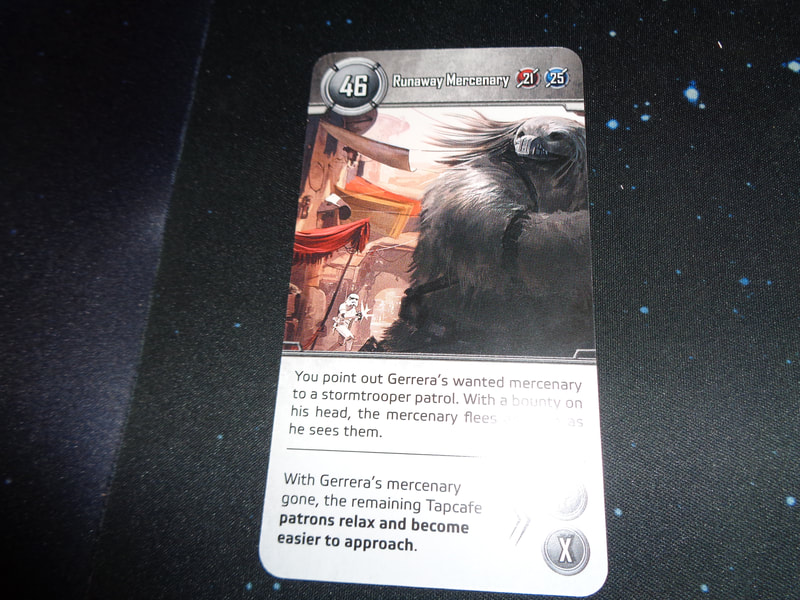
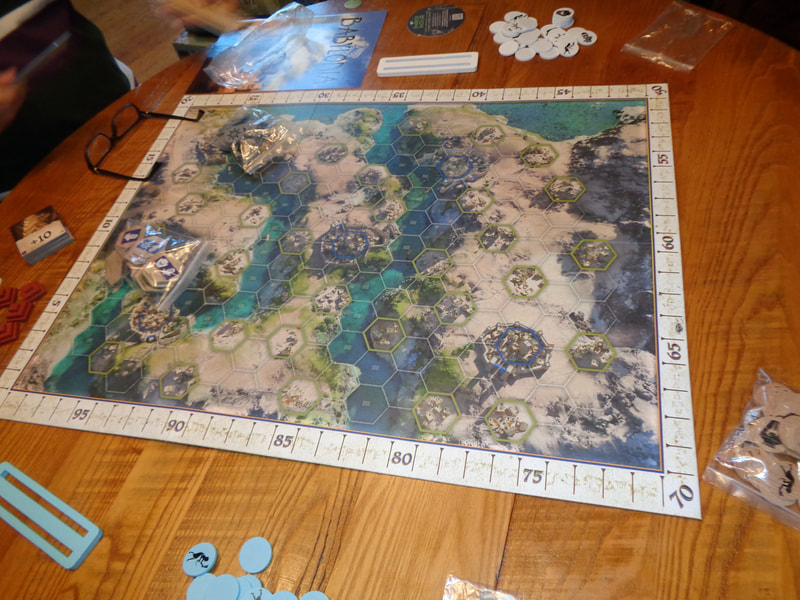
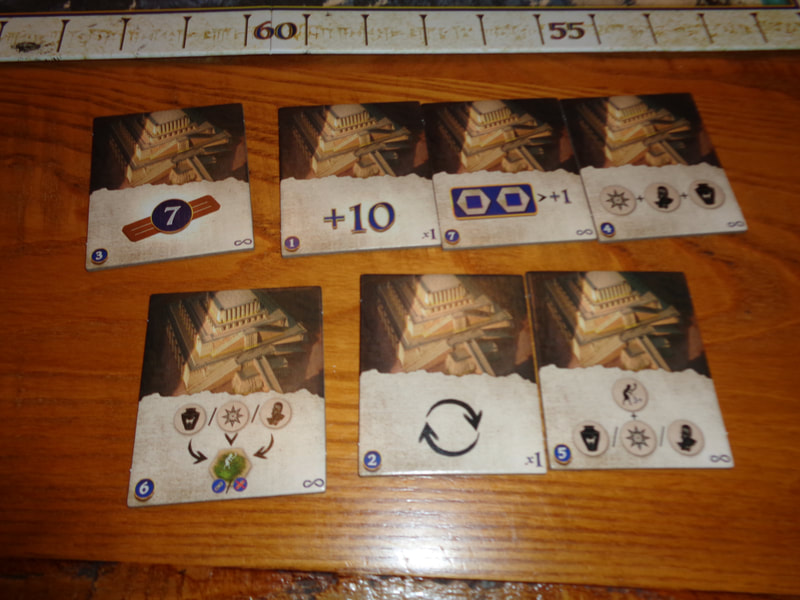
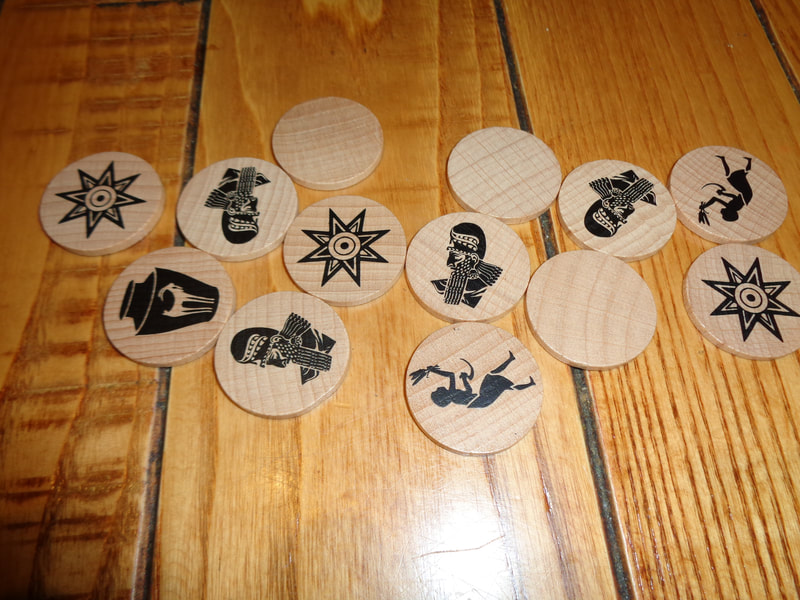
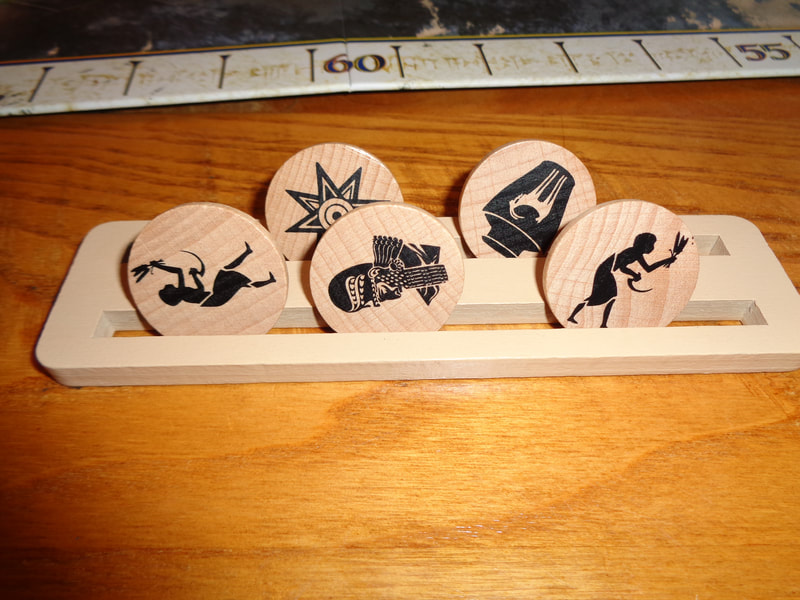
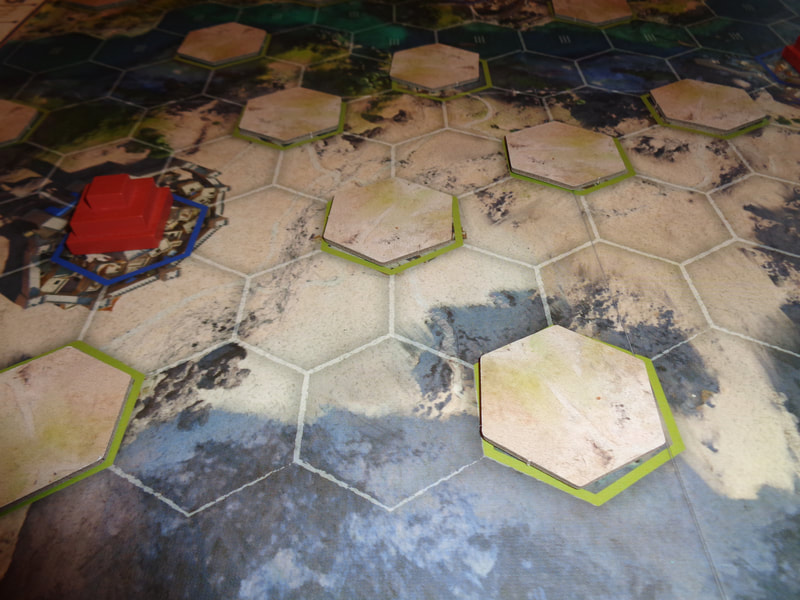
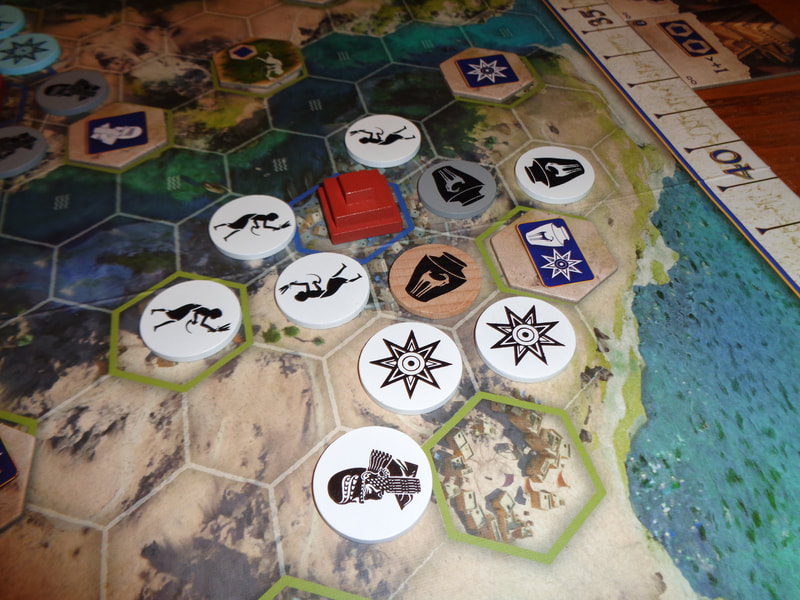
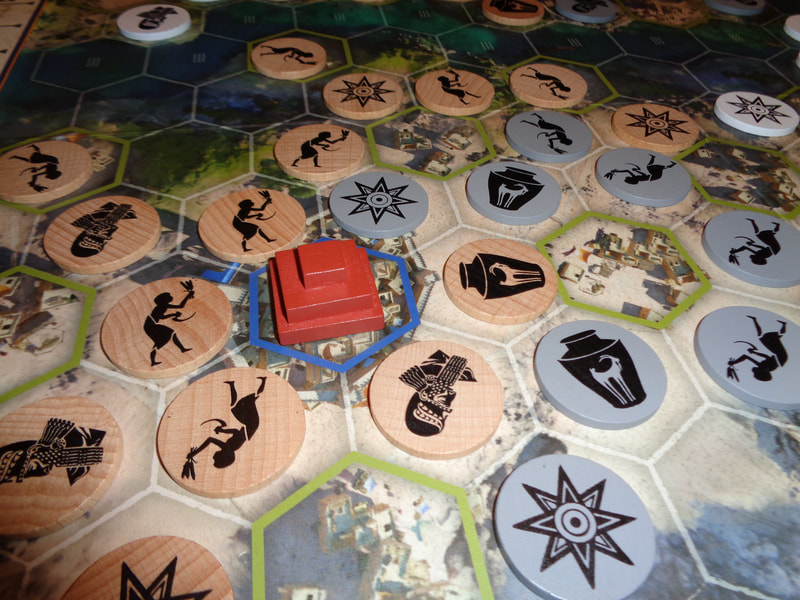
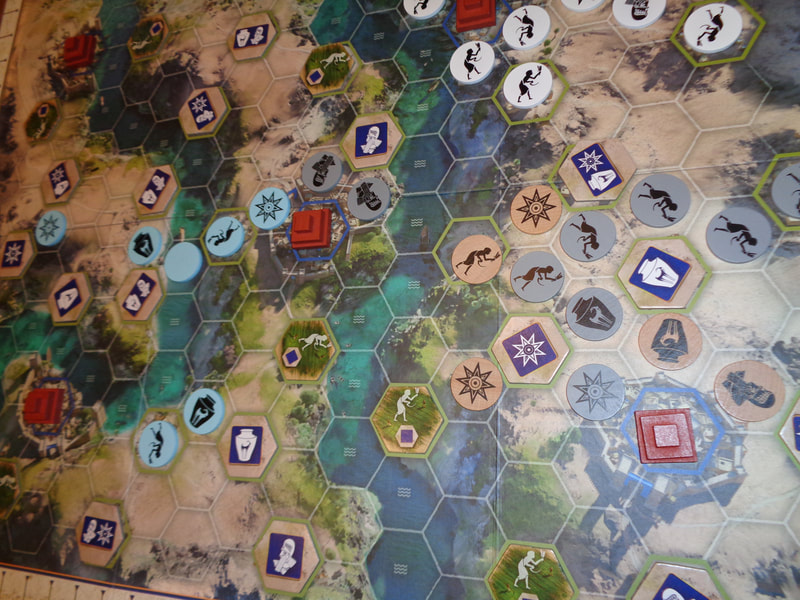
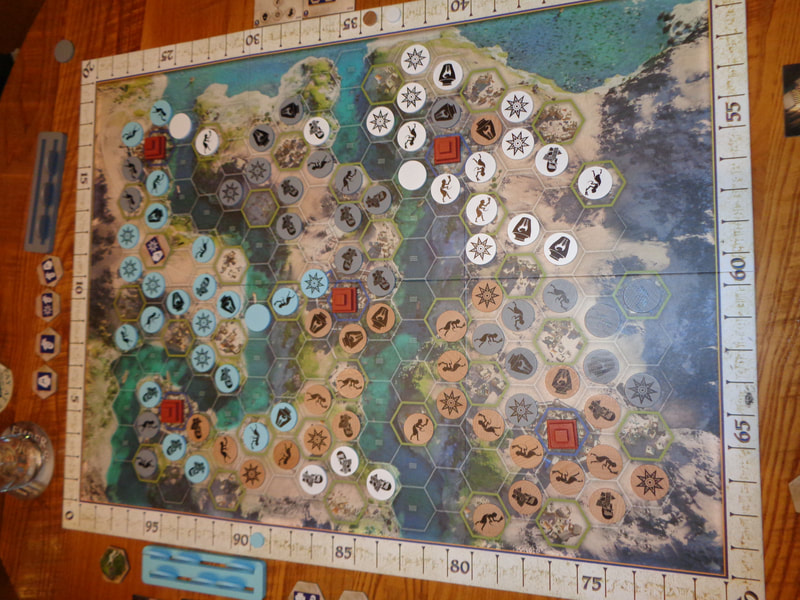
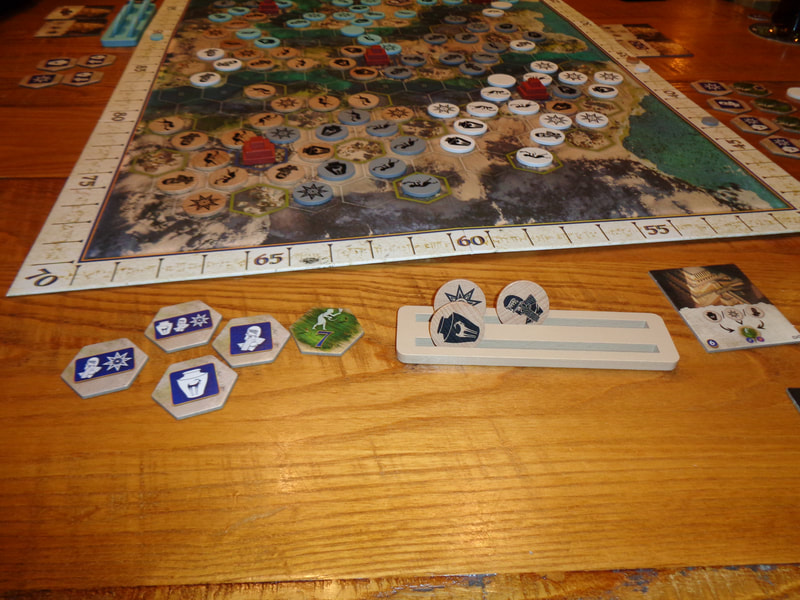
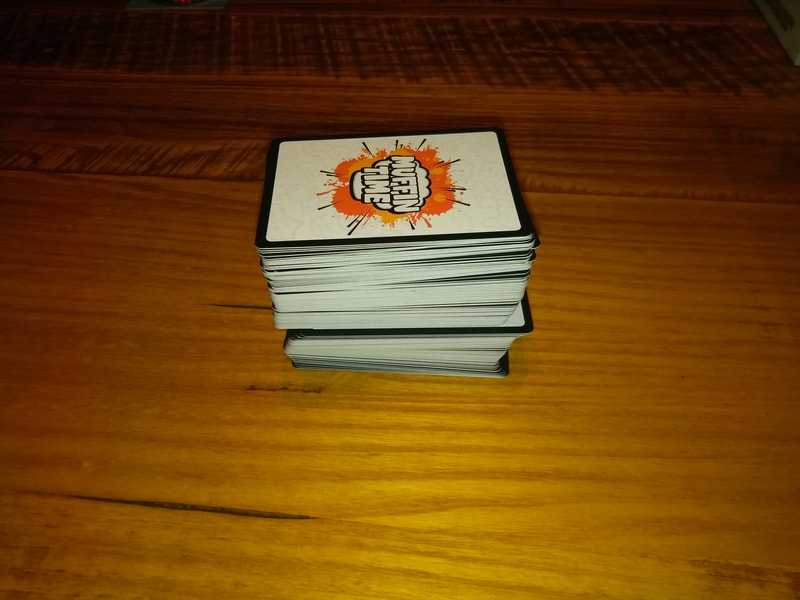
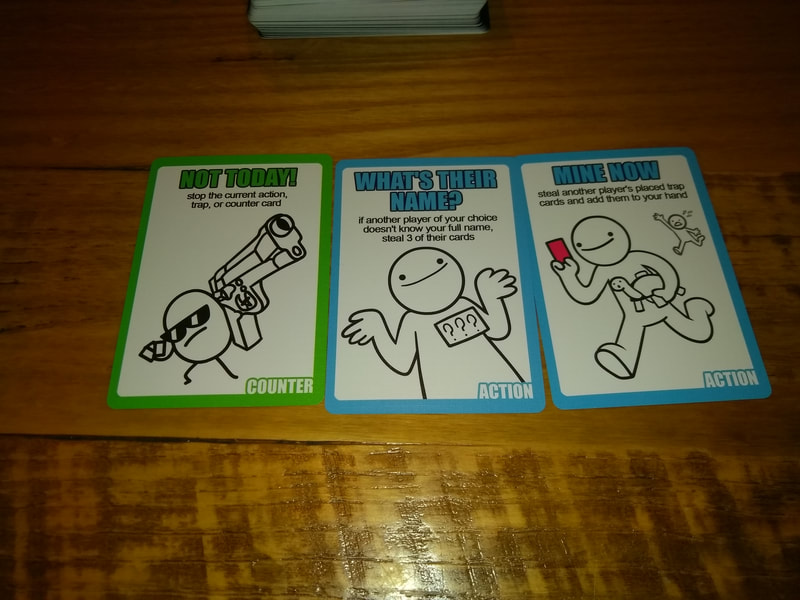
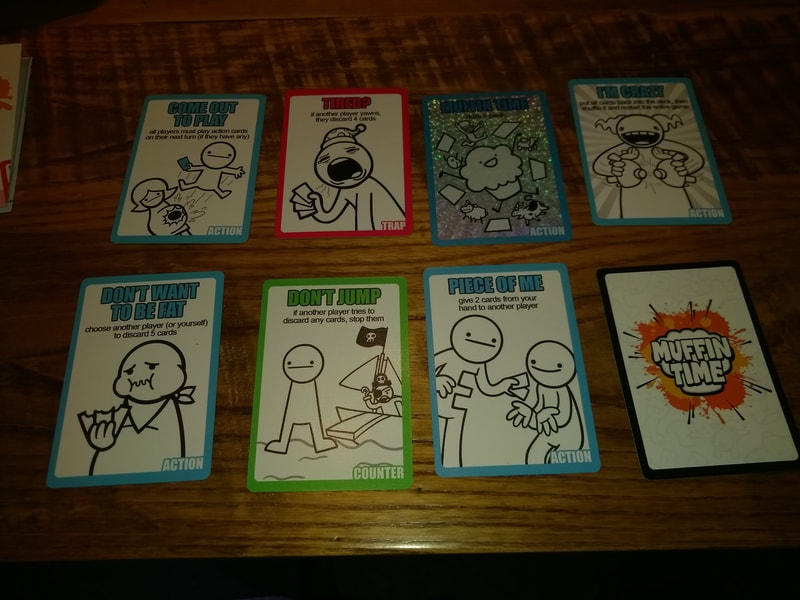
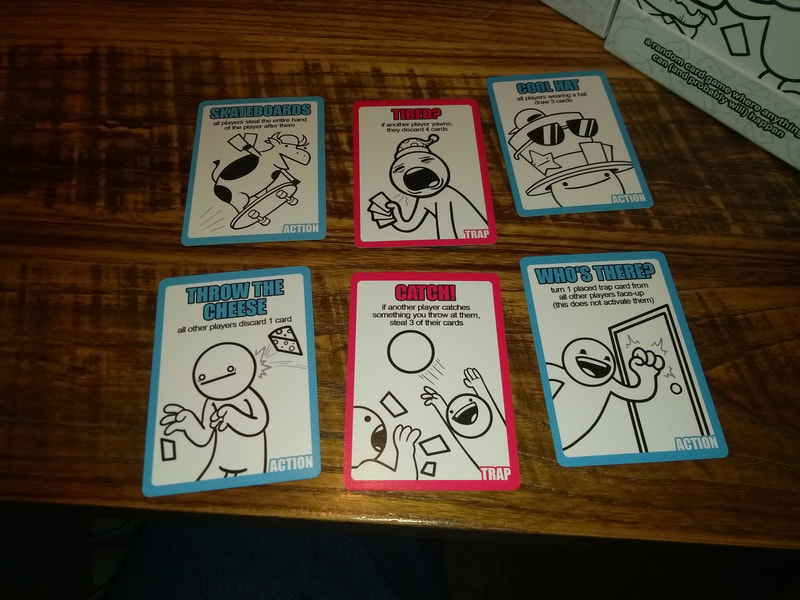
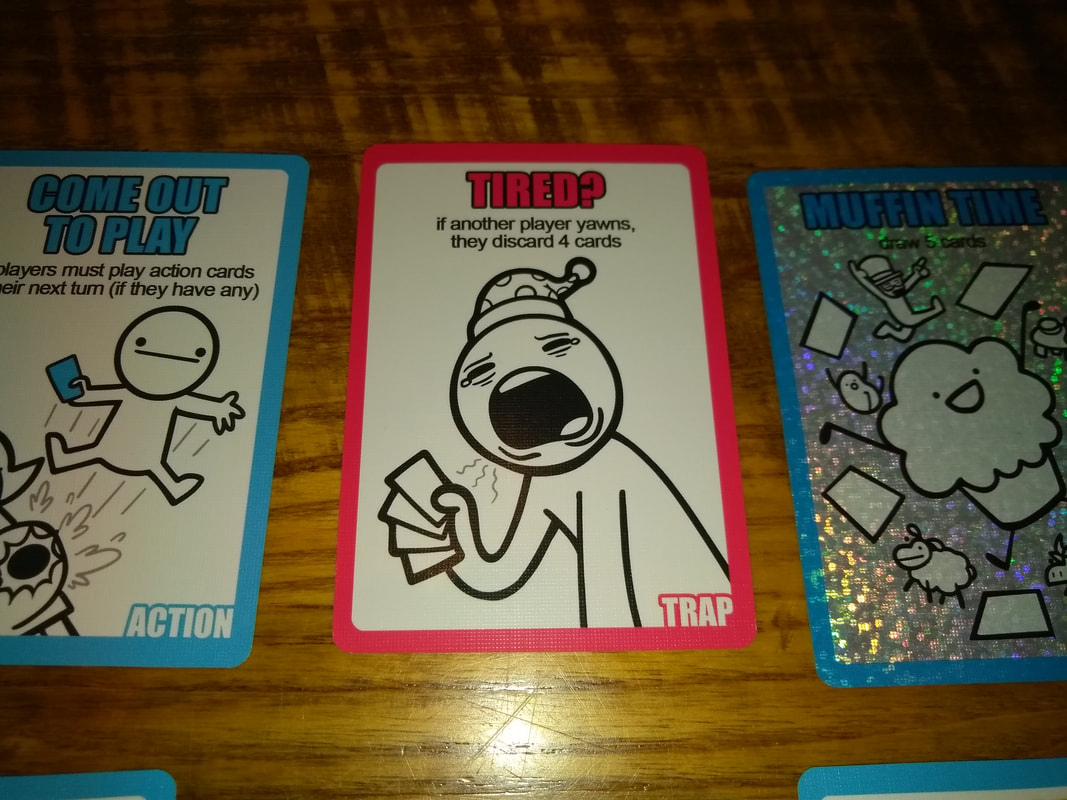
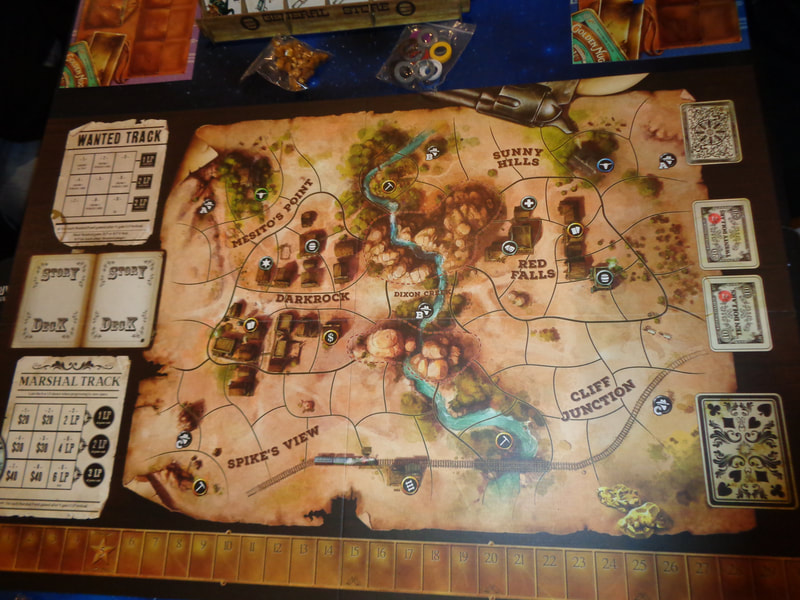
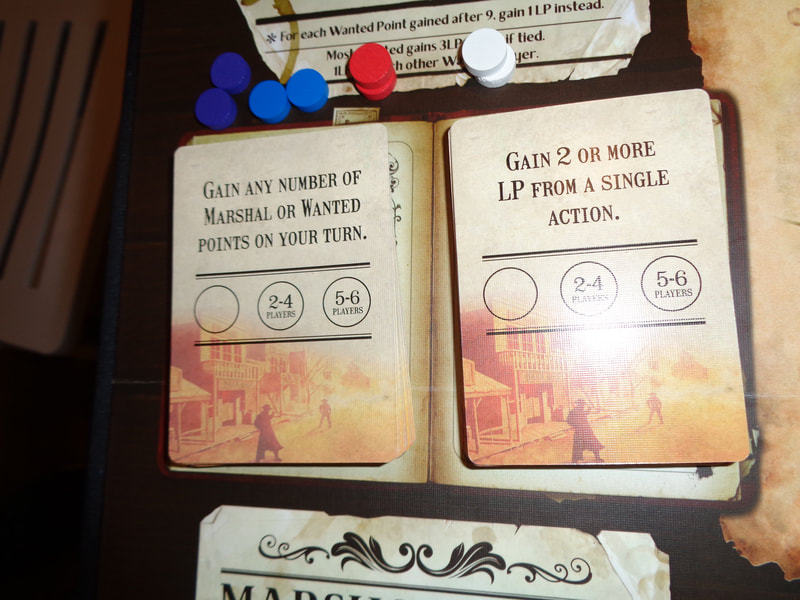
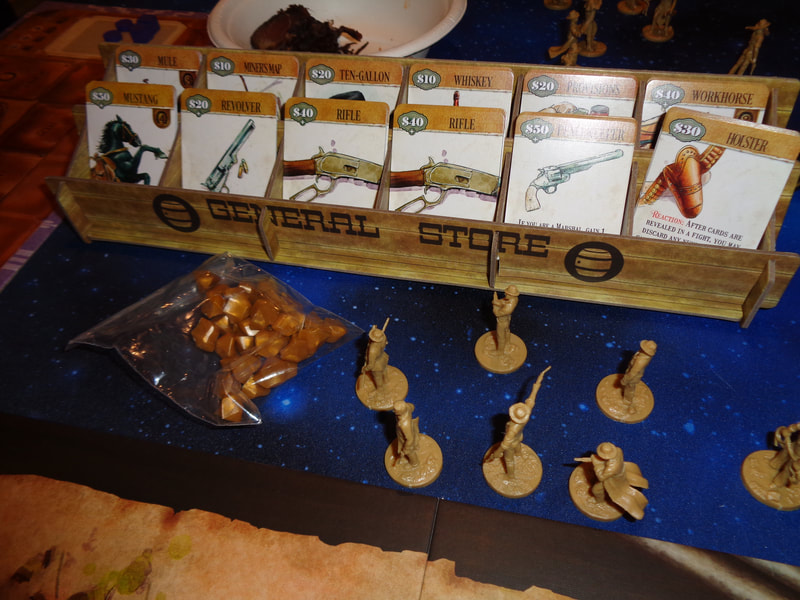
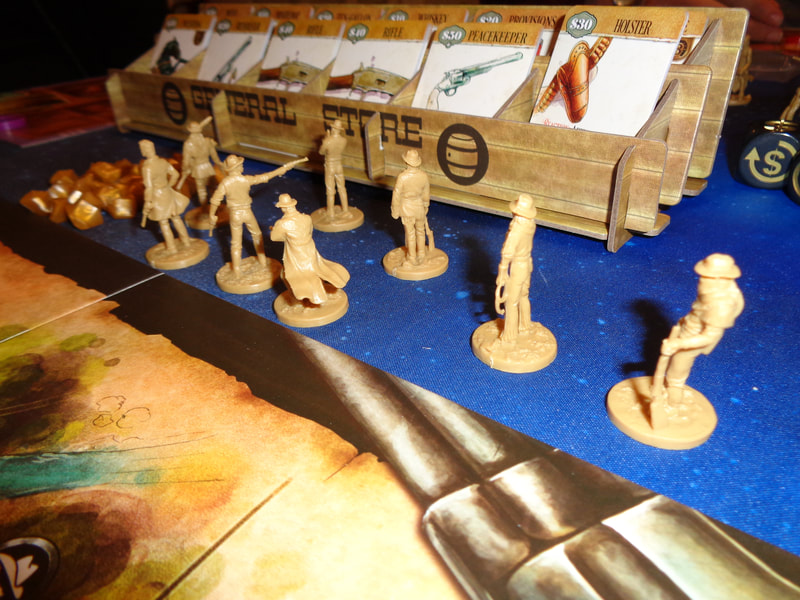
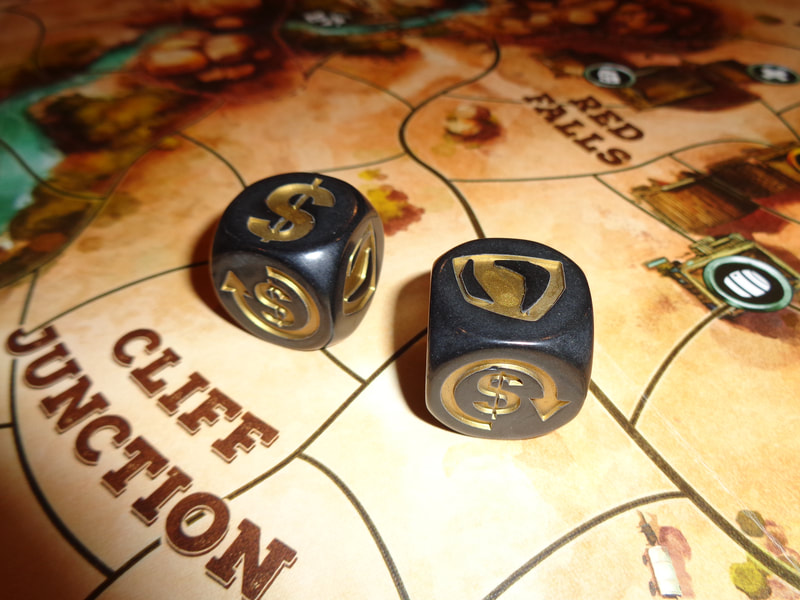
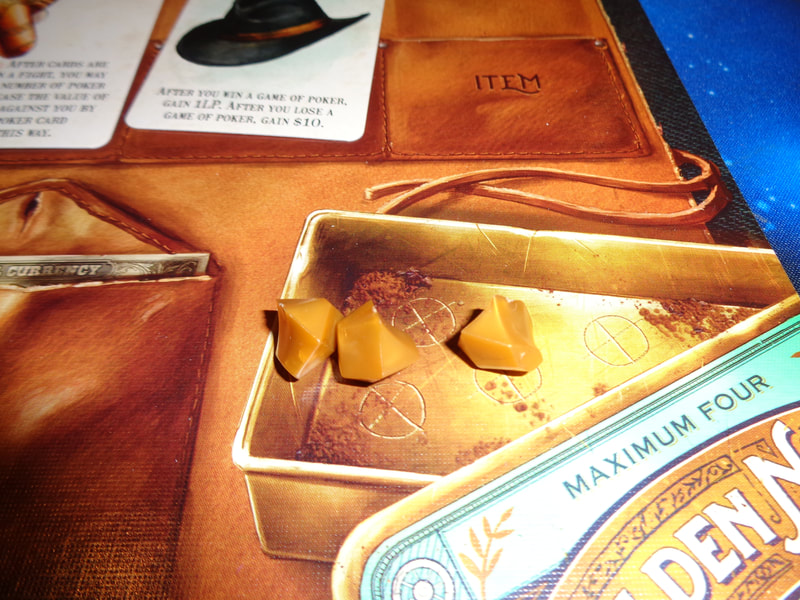
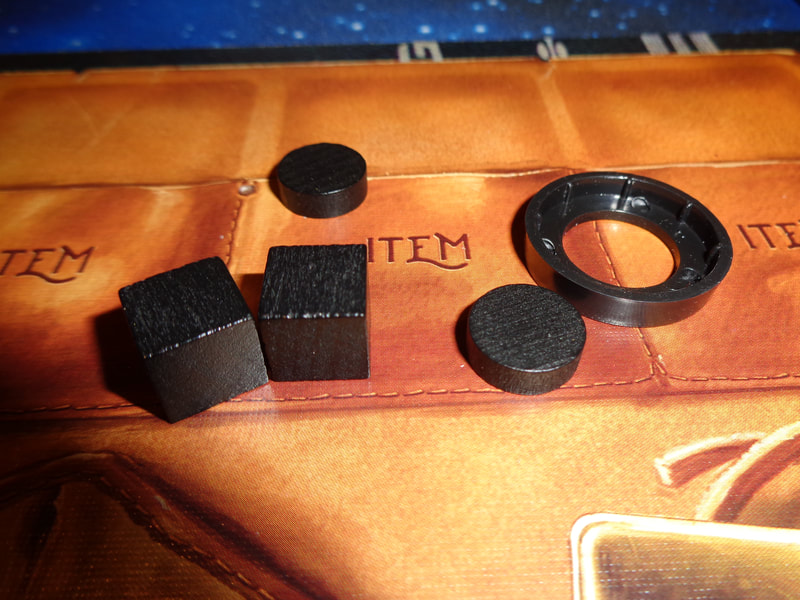
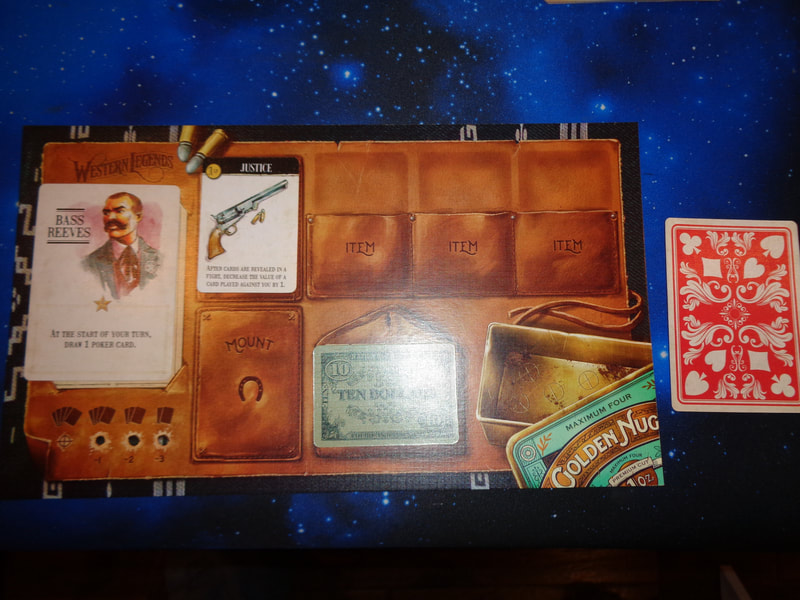
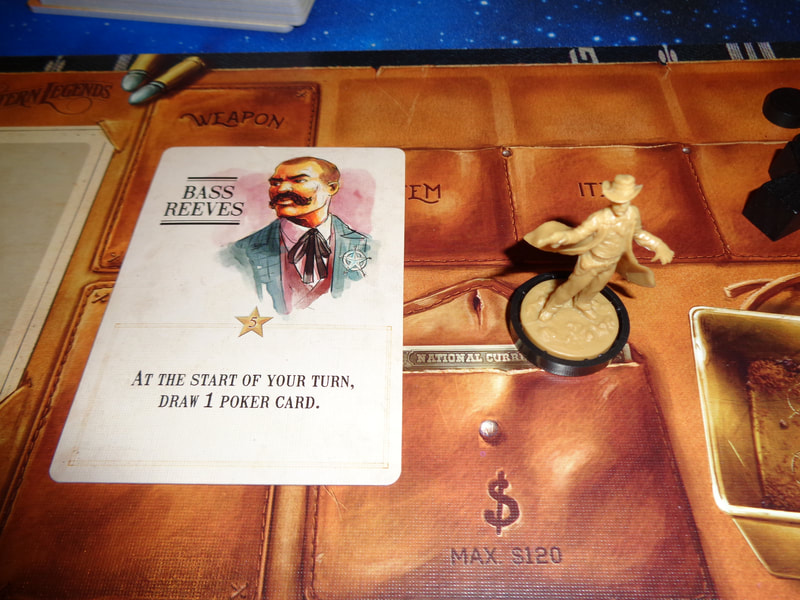
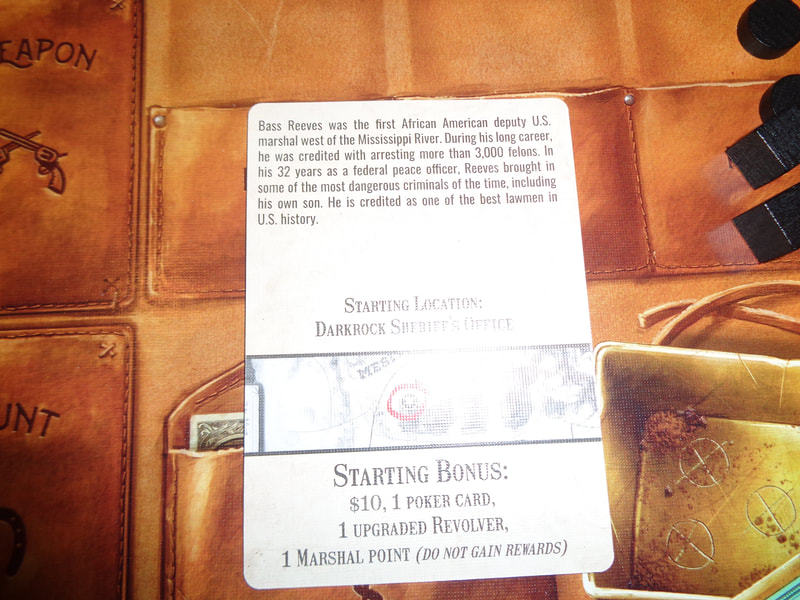
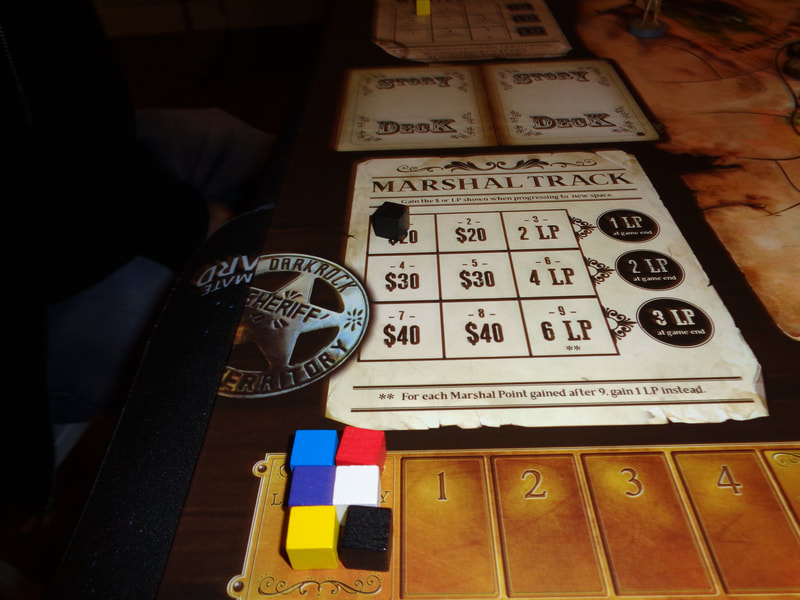
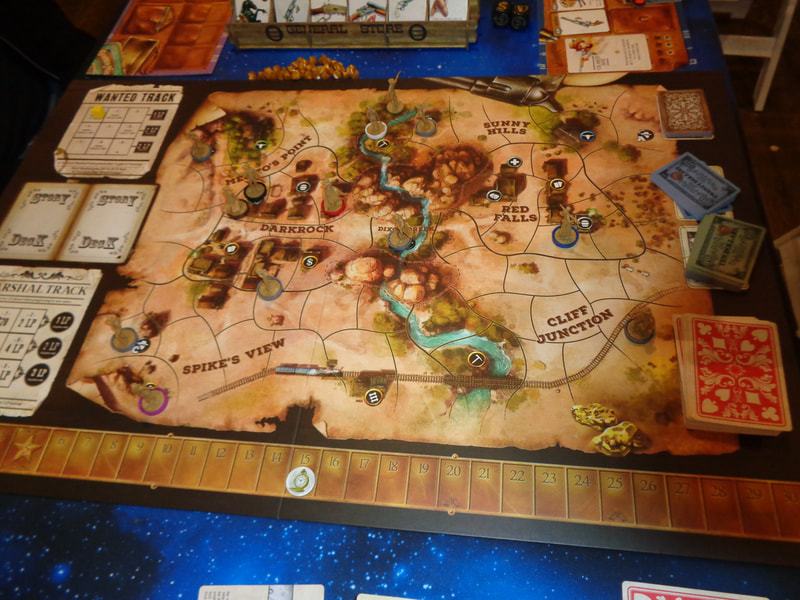
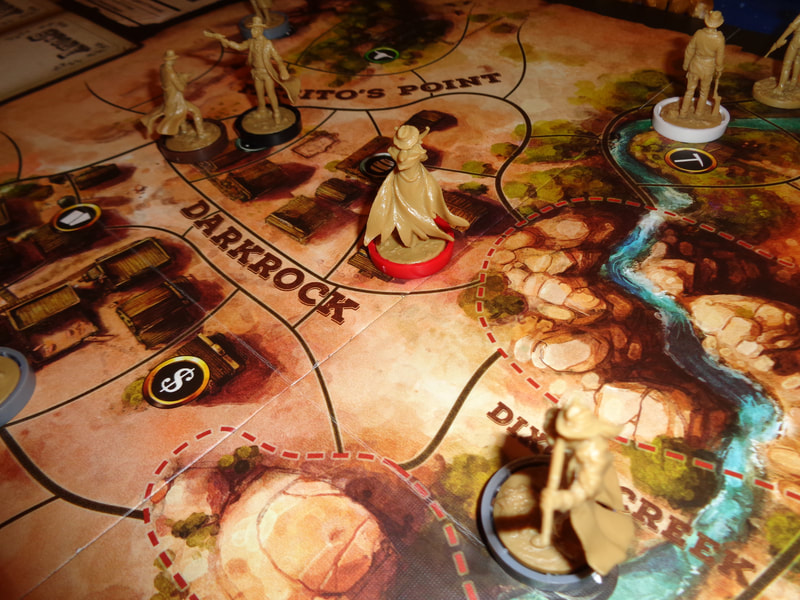
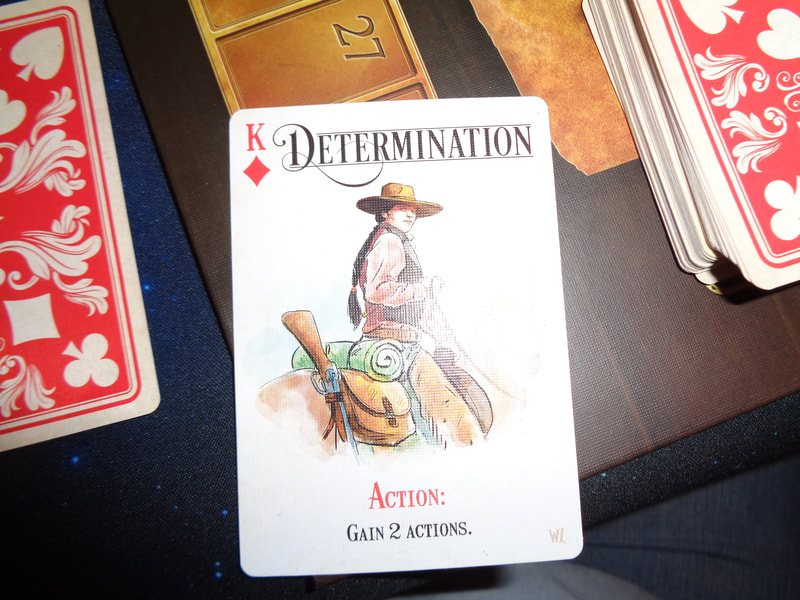
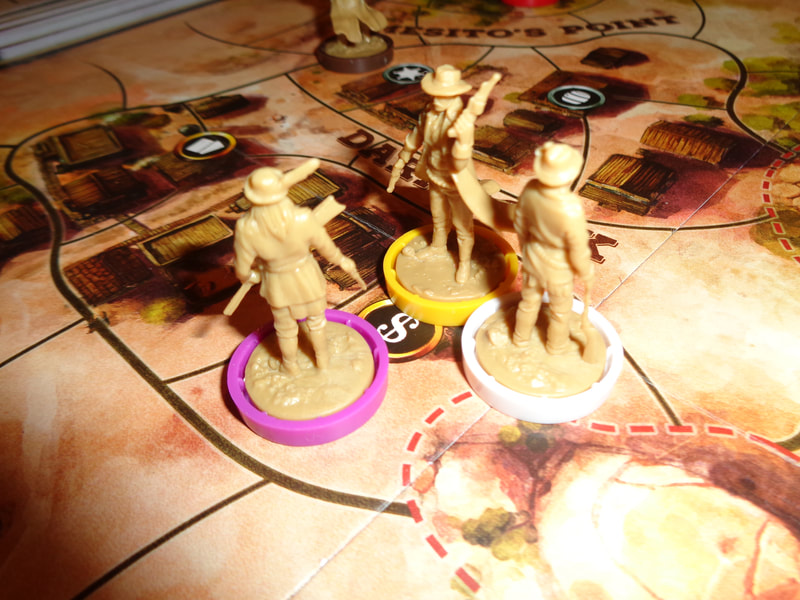
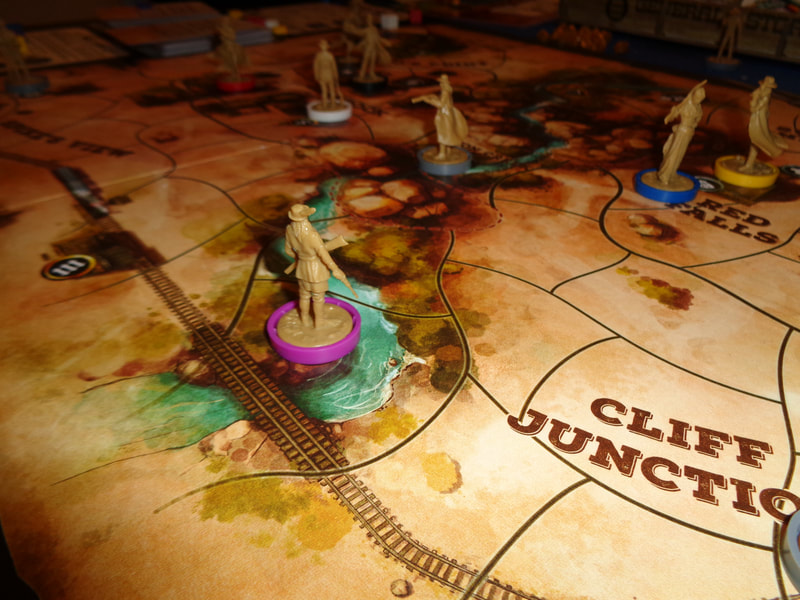
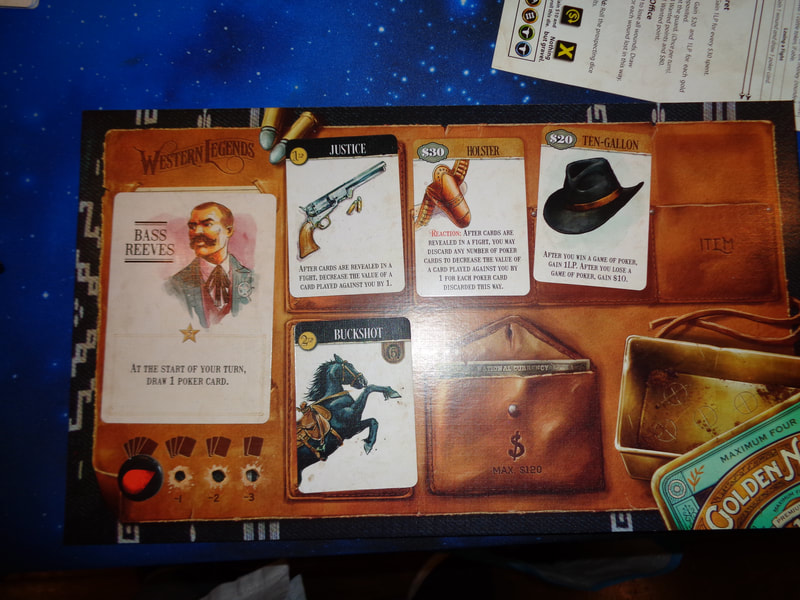
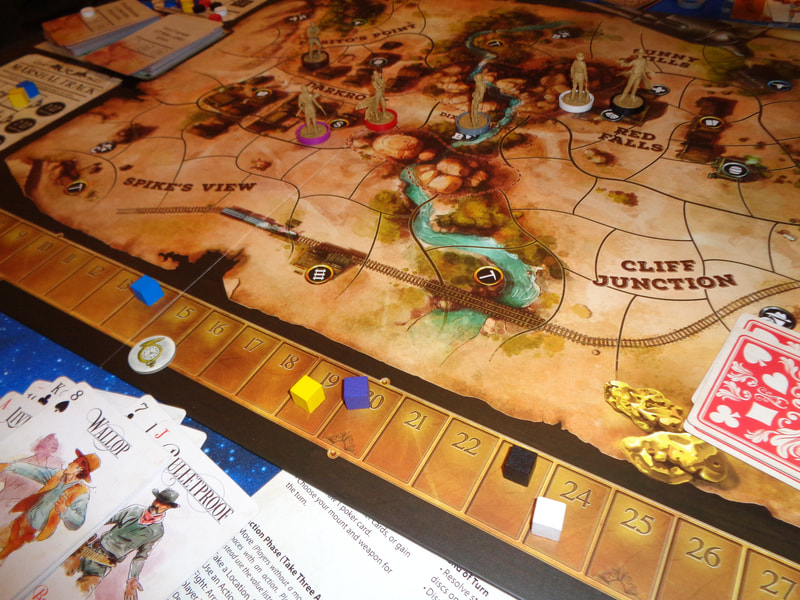
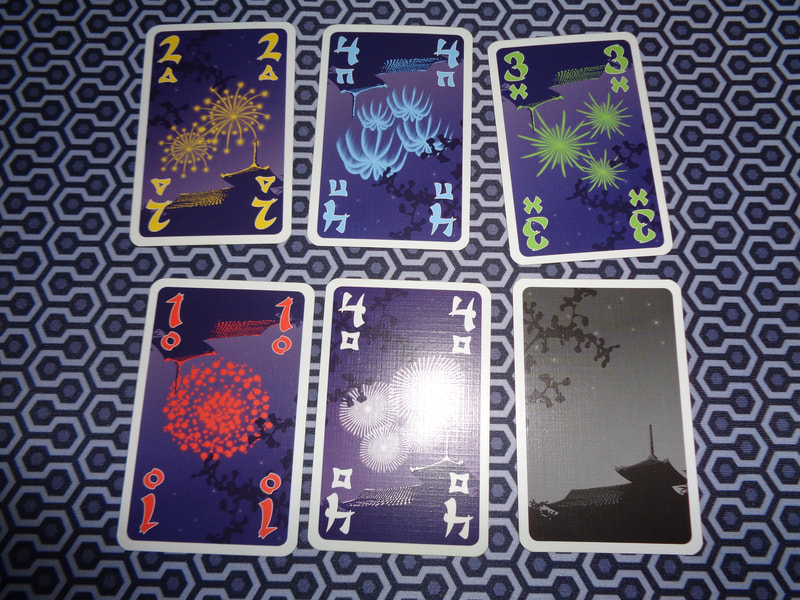

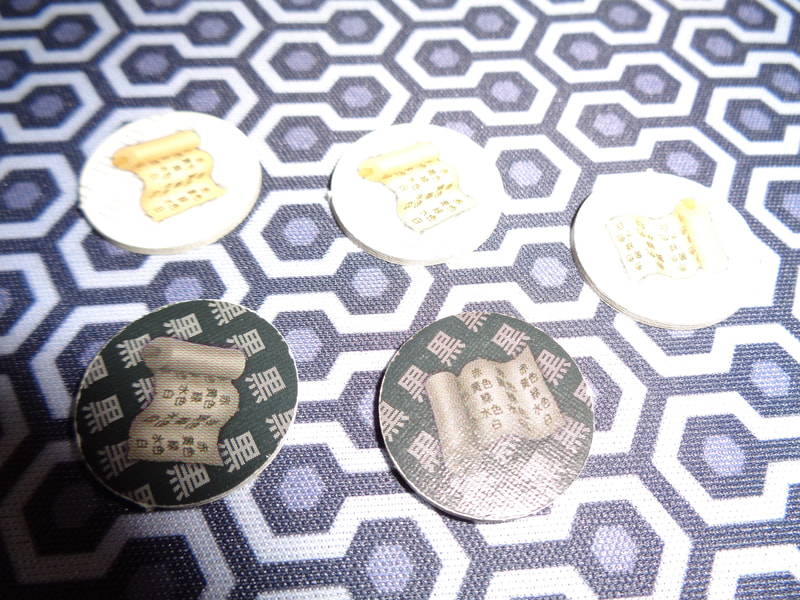
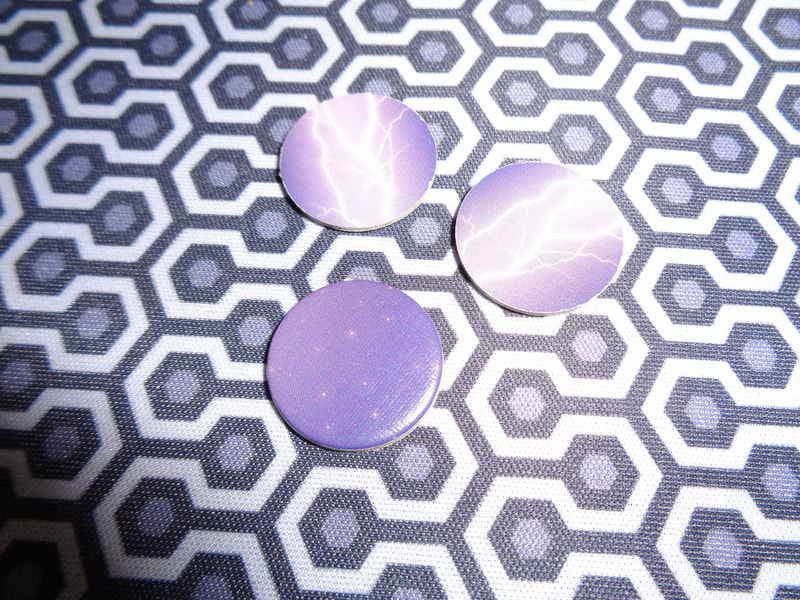
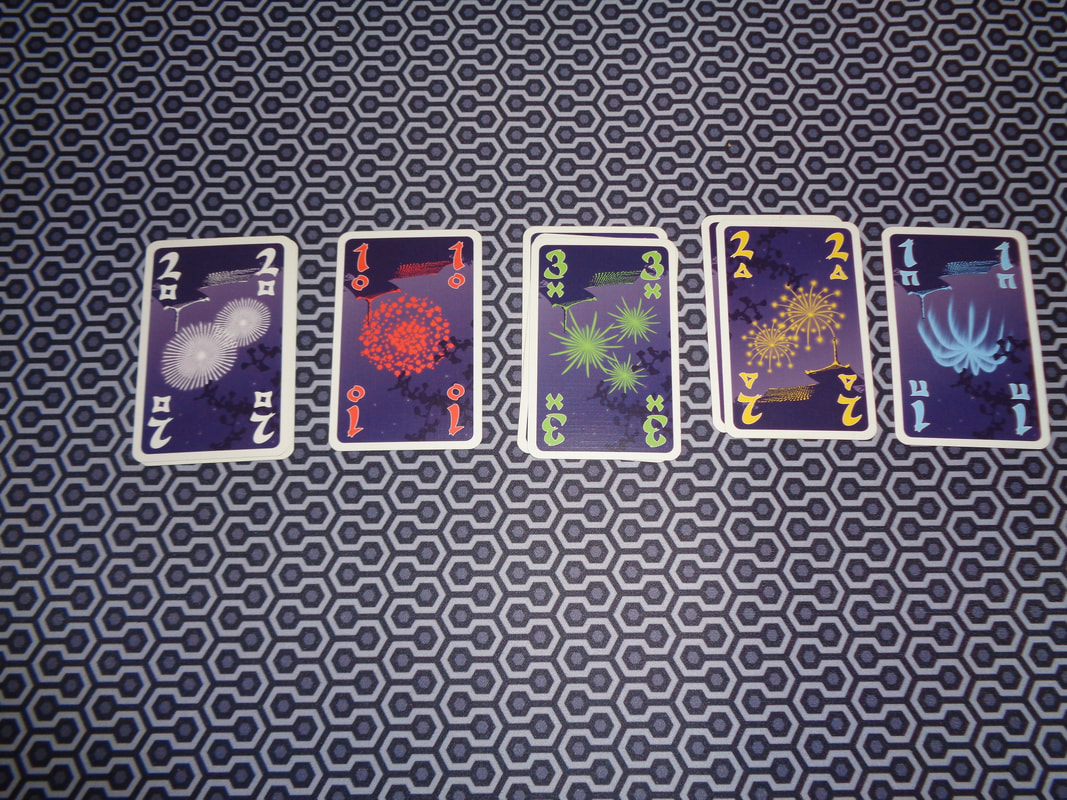
 RSS Feed
RSS Feed
